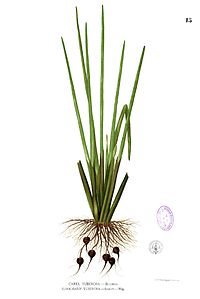
Photo from wikipedia
Abstract Temperature sums are widely used to predict the seasonal timing of yearly recurring biological events, such as flowering, budburst, and hatching. We use a classic energy allocation model for… Click to show full abstract
Abstract Temperature sums are widely used to predict the seasonal timing of yearly recurring biological events, such as flowering, budburst, and hatching. We use a classic energy allocation model for annual plants to compare a strategy for reproductive timing that follows a temperature sum rule (TSR) with a strategy that follows an optimal control rule (OCR) maximizing reproductive output. We show that the OCR corresponds to a certain TSR regardless of how temperature is distributed over the growing season as long as the total temperature sum over the whole growing season is constant between years. We discuss such scenarios, thus outlining under which type of variable growth conditions TSR maximizes reproductive output and should be favored by natural selection. By providing an ultimate explanation for a well‐documented empirical pattern this finding enhances the credibility of temperature sums as predictors of the timing of biological events. However, TSR and OCR respond in opposite directions when the total yearly temperature sum changes between years, representing, for example, variation in the length of the growing season. Our findings have implications for predicting optimal responses of organisms to climatic changes and suggest under which conditions natural selection should favor photoperiod versus temperature control.
Journal Title: Ecology and Evolution
Year Published: 2019
Link to full text (if available)
Share on Social Media: Sign Up to like & get
recommendations!